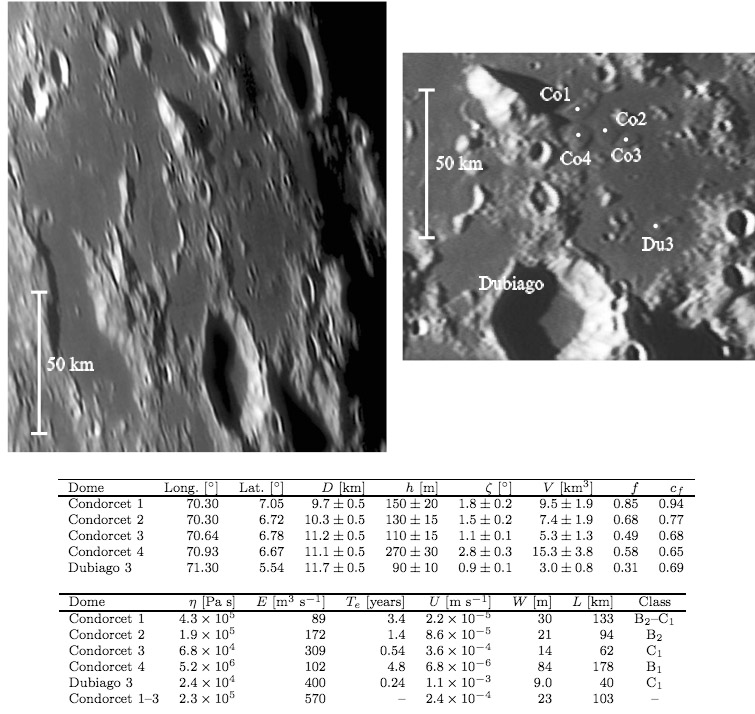December 13, 2017
Learning a Lot About Little Hills
Originally published June 11, 2008

figure compiled from Lunar domes in Mare Undarum: Spectral and morphometric properties, eruption conditions, and mode of emplacement
For the last 60 years the distinction between amateur and professional observers of the Moon was clear. Amateurs made visual and imaging observations and commented on the smallness of detected features. Professional observers made measurements and physical models. Ralph Baldwin was one of the earliest modern professionals, measuring crater diameters and depths to compare with volcanic and explosion craters on Earth. Later, telescopic and then spacecraft spectral data provided a powerful tool to quantitatively distinguish - and sometimes identify - compositions of different lunar materials. Most amateurs today still just observe and image - and that is OK for they are like serious tourists seeking to understand a strange land. Others, who started out as tourists, have made the transition to professional status because of their measurements and modeling. The most successful example are members of the the Geological Lunar Research Group who have specialized in understanding the physical conditions and processes of lunar dome eruptions. Their latest paper concerns these domes in Mare Undarum, north and east of the lava-floored crater Dubiago. The top four domes, labeled Co1 to Co4 after the nearby Condorcet crater, are somewhat traditional domes about 10-12 km in diameter, with Co4 having a greater height, and thus volume and slope, than its neighbors. The dome Du3 is about the same diameter, but much less steep (~0.9°) and more like a swell than a classical dome. The top table gives these measured quantities, and the bottom table shows the derived ones from models of magma rise and eruption. One of the most interesting - and understandable - quantities is Te, the inferred duration of eruption, which ranges from 3 months to nearly 5 years. Careful perusers will note that the eruption durations are proportional to erupted volumes, which makes sense. To find out what all the other columns of data mean see the full paper by Raffeallo Lena and his coauthors. Here is a general overview of this professional work on domes. Note that these Undarum results are based on images by people well known to LPOD readers: Stefan Lammel, Paolo Lazzarotti and Bob Pilz, and coordinates were determined using Jim Mosher's LTVT software.
Chuck Wood
Related Links
Rükl plate 38
Yesterday's LPOD: CEB & DEB
Tomorrow's LPOD: A Quadrant Image
COMMENTS?
Register, Log in, and join in the comments.



